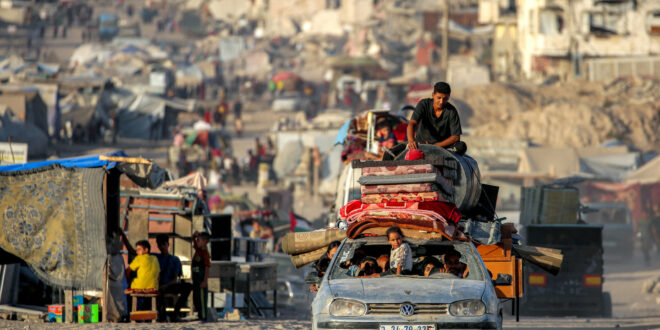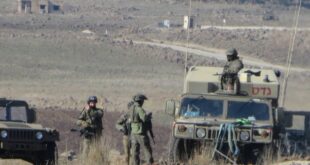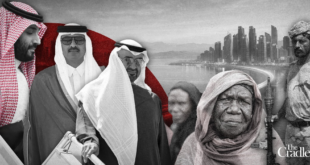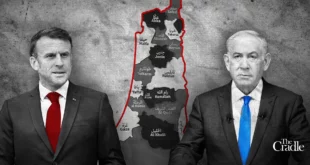Palestinian families across Gaza City confront an agonising decision as Israeli forces intensify military operations, declaring the area a “dangerous combat zone.” With nowhere safe to go and lacking resources to flee, residents describe feeling trapped between violence and survival in overcrowded displacement camps.
Ahmed Mohammed Fayad packs belongings from his third-floor apartment in Gaza City’s Daraj neighbourhood, preparing his family of seven for displacement to al-Mawasi.
The 45-year-old father tries to calm his wife and children, who cannot stop crying as they leave the apartment they returned to during January’s ceasefire.
“The displacement experience makes the entire family think carefully before making this decision,” Ahmed explains.
“We lived in displacement camps and inside tents, scorched by summer heat and winter cold. We spent difficult days during which we wished for death.”
His decision came after the Israeli military announced the cancellation of daily “humanitarian pauses” for aid distribution.
“This was like a real alarm bell threatening Gaza City,” he said, describing the day as “the saddest of my life.”
Not all families have reached the same conclusion.
Jamil al-Kafarneh, displaced from Beit Hanoun, advocates for delaying displacement until political options are exhausted. “We don’t need to rush and anticipate things. We must not leave the north this way,” the 60-year-old said.
During the war’s early months, Jamil moved within northern Gaza 12 times with hundreds of thousands of Palestinians.
“We stood in the face of tanks before and remained despite starvation. We need a collective position of refusal,” he said, though acknowledging he would ultimately flee if formal evacuation orders were issued.
The cost weighs heavily on families devastated by economic collapse. “Even if we decided to move south, is there a place to put up a tent? Do we even own this tent, or can we afford transportation?” Jamil questioned.
Twenty-six-year-old Ramzi Abu Khader, living in a makeshift shelter with his four children, faces similar financial barriers.
“I don’t have enough money for displacement requirements — tents, tools, transportation costs,” he said. “We need at least $2,000 minimum to move south.”
The unemployed father described the psychological toll: “When I think about leaving, I get a feeling closer to wishing for death, but the final decision is displacement, though I will wait until official orders are issued.”
Adli Asaliyeh, who has been displaced more than 10 times since the war began, now supports 24 family members, including the families of his five sons killed in Israeli airstrikes.
“The task is very heavy, and I am the sole breadwinner,” he said.
For ten days, Adli has searched unsuccessfully for space in al-Mawasi while trying to raise transportation money.
“We speak with confusion between the desire to stay and preserve lives, because if we leave the north, we will never return this time,” he said.
Infrastructure at breaking point
Sheikh Mohammed al-Astal, a relief activist, categorically denies Israeli claims about available displacement space.
“It is impossible because al-Mawasi hosts displaced people from Khan Yunis and Rafah, whose numbers reach approximately 800,000,” he tells The New Arab.
The coastal “humanitarian zone” extends only one kilometre inland and 12 kilometres in length, lacking basic infrastructure.
“I need 35 cups of desalinated water daily for camps, but can only provide half due to shortages,” Sheikh Mohammed explained. “How would it be if other numbers were added? This is a new catastrophe.”
Israeli attacks intensified overnight, with explosions in Gaza City’s Zeitoun neighbourhood and strikes near Beit Lahiya.
An Israeli military spokesperson announced: “We have begun preliminary operations and initial stages of the attack on Gaza City, operating with great force on the outskirts. We will intensify our strikes.”
More than 100 Palestinians were killed in Israeli attacks in Gaza on Tuesday as the military continued its devastating and indiscriminate assault on Gaza City.
Dozens of aid seekers and several journalists were among those killed in the attacks, which came as the Israeli military called up tens of thousands of reservists to invade and occupy Gaza City.
Prime Minister Benjamin Netanyahu on Tuesday called the attack on the city a “decisive stage of the war”. At the same time, Israel’s military chief of staff said there would be no end to the war until Hamas is defeated.
Mounting human cost
The official death toll has topped 63,000, according to Gaza’s Health Ministry, with total casualties since October 7, 2023, standing at 63,025 killed and 159,490 injured.
At least 32 people were killed while trying to receive aid from sites operated by the Israel and US-backed Gaza Humanitarian Foundation (GHF). The sites run by the organisation have witnessed almost daily massacres of Palestinians since they began operating at the end of May.
More than 2,300 have been killed and almost 17,000 others injured near GHF facilities over the past 14 weeks. A further six Palestinians have died of malnutrition over the past 24 hours, including one child, the Gaza health ministry said on Wednesday morning.
This takes the number of people to have died from starvation since October 7 to 367, among them 131 children, while 83 hunger-related deaths have been recorded since the IPC — a UN-backed food monitor — declared a famine in Gaza 11 days ago.
More than 514,000 people in Gaza – almost a quarter of the population – were said to be experiencing famine, a number that is expected to rise to 614,000 by the end of September.
UN Secretary-General Antonio Guterres said on Thursday that “Israel’s initial steps to militarily take over Gaza City signal a new and dangerous phase.” He warned that “hundreds of thousands of civilians, already exhausted and traumatised, would be forced to flee yet again.”
UN human rights experts expressed alarm over reports of enforced disappearances at aid distribution sites, citing cases where people vanished after seeking food.
For families facing Gaza City’s potential occupation, these statistics represent daily calculations between impossible choices.
As Ahmed loads his belongings into a small car, his story reflects thousands making similar decisions — weighing familiar dangers against unknown hardships in overcrowded camps where survival itself has become the only victory available.
Despite mounting military pressure, many Palestinians across Gaza City remain defiant about leaving their homes yet again.
Families like Jamil’s represent a significant portion of residents who have endured multiple displacements throughout the nearly three-year genocide and are determined not to abandon the north, viewing continued displacement as capitulation to Israeli plans for permanent demographic change.
These families argue that repeated displacement has only brought them the same dangers they face by staying, while contributing to what they see as systematic efforts to empty northern Gaza of its Palestinian population.
 Eurasia Press & News
Eurasia Press & News



